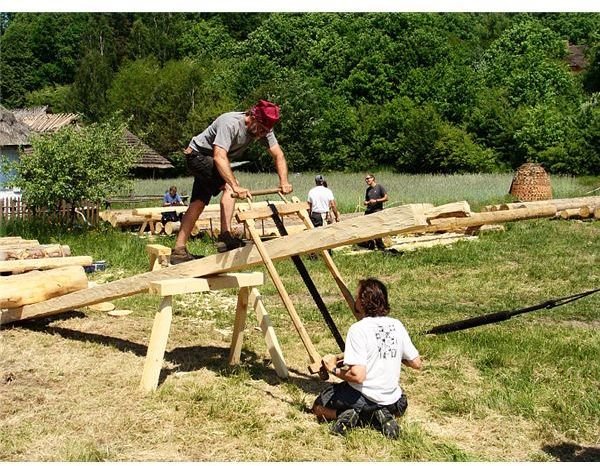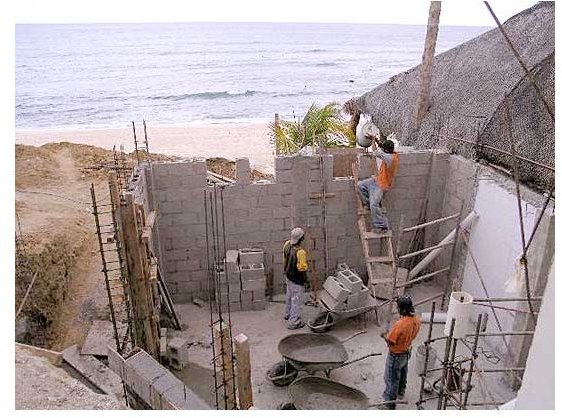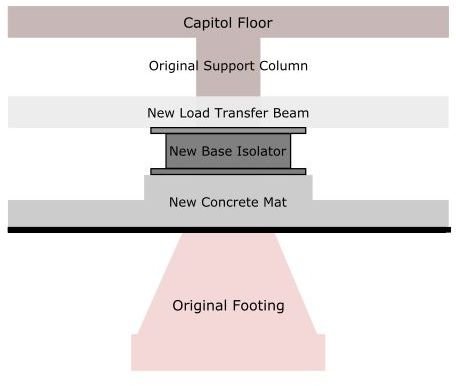Guide to Building Construction - From Basic to Advanced Considerations
When considering any sort of building project, there are many things that you need to consider even before you can break ground. You have to decide whether or not you want to use traditional building methods, known in the building trades as stick (wood framing) or steel building, or whether you want to use a non-traditional building method, such as green technologies or using the earth or logs as your construction materials. Whether building a complete house, adding on to or remodeling an existing house or other type of structure, you’re going to need qualified people to do the work, or at least to oversee the work being done. Additionally, where you build may cause you to have to take special situations into consideration, such as being in a flood plain or special local zoning and building codes requiring noise abatement during construction. Recent geological events around the world have brought earthquake preparedness to the fore. The earthquake on the East Coast of the United States has reminded people there that the western part of the country isn’t the only area that experiences seismic activity. Have a specific construction project such as a stairway, deck, or home theatre in mind? Referenced here is some information that will help you hit the ground running with these types of projects.
Using Green or Alternative Building Materials
Construction methods that minimize the environmental impact of the construction project have started to gain in popularity. Building a house or other structure into the side of a hill can help insulate the building, decreasing the amount of energy required to heat or cool the interior. Using materials such as cob (er cobb) can decrease the impact your building project has by decreasing the amount of wood required and the energy required to mill the wood or create the concrete for stucco exteriors.
<strong>Eco-friendly Construction</strong>
<strong>Buildings Constructed From Natural Green Materials- Cob</strong>
<strong>Building Off the Grid? DIY Timber Framing</strong>
<strong>How Building Green Got Its Start</strong>
<strong>Building Better for Solar Heating and Cooling</strong>
<strong>Environmental Gains of Building Green in America</strong>
<strong>An Investigation into Logs Being the Best Natural Green Building Materials</strong>
<strong>Buildings Constructed from Rammed Earth</strong>
Examples of Alternative and Green Building Technologies

Skillsets Found on a Typical Jobsite
Every construction project requires project management. The project manager is responsible for overseeing the entire project and minimizing safety concerns to limit physical and financial losses. Every project also needs skilled trades people, either to perform the work or to oversee the work being done if you plan on doing most of the work yourself. But how do you know if someone is qualified to do the work? Every state has its own method of determining the minimum skill level required for proper licensing of journeymen and apprentice-level workers.
Referenced below is information regarding the licensing process in various jurisdictions. Not all work pertaining to a construction project occurs on the construction site. There’s actually more that goes on behind the scenes than you may think. You’ll discover what some of these activities are. One technology growing in popularity worldwide is solar energy. There’s also information referenced below concerning this technology and those that install it.
<strong>The Construction Project Manager: Limiting Risks</strong>
<strong>Certification of Construction Skills</strong>
<strong>Construction Site Work</strong>
<strong>Work as a Solar Installer</strong>
Construction Workers


Special Conditions and Building Techniques
If you live near a damn or other type of waterway, as you build, you need to take that fact into account. There may be special code and permit requirements for building there. If you live or are building in a wilderness area, there may also be special code and permitting requirements. Both situations may also have special insurance requirements. Building near major roadways such as highways, expressways, and major thoroughfares brings its own special considerations, especially that of noise abatement. Referenced below you’ll find information on these subjects that will help make the decision-making process and your building project as easy as possible.
<strong>Flood Plains, Insurance, and Building Construction</strong>
<strong>Sound Proof Construction Techniques</strong>
<strong>Acoustics and Noise Control of Buildings</strong>
Construction Practices for Earthquake Preparedness
Earthquakes have been big news this year. The huge temblor off Japan and the (relatively, for this Californian) mild earthquake on the East Coast of the United States has more people thinking earthquake safety and preparedness. Scientists with the U.S. Geological Survey state that almost no place in the country is completely safe from earthquakes. This means that if you’re planning a building construction project of any sort, you should include some sort of quake safety precautions in your building. Referenced below you will find a host of information to help you do just that.
<strong>What is Earthquake Engineering?</strong>
<strong>Low Cost Housing Construction in Earthquake Zones</strong>
<strong>Preventing Earthquake Failure of Structural Precast Concrete Components</strong>
<strong>Damages in Earthquake</strong>
<strong>An Introduction to Earthquake Engineering: Goals, Technology, and Research Methods</strong>
<strong>Design Parameters of Foundations in Seismic Zones</strong>
<strong>Working Principle of Base Isolation</strong>
<strong>Basics Of Seismic Vibration Control</strong>
<strong>Base Isolation in Seismic Engineering</strong>
<strong>Shake Things Up! An Earthquake Lesson Plan Using Shake Tables</strong> (in Education)
Earthquake Construction


Specific Construction Projects
OK, so maybe the building construction project you have in mind isn’t as involved as building a whole building or house. Maybe you just want to add some stairs or a deck to your building or home. Or, maybe you want to save money on your winter heating bill by safely installing a wood burning stove. Recently bought a ranch-type property with a barn you want to renovate? No problem. You’ll find information on all of these project types referenced below, as well as information on how to turn a room into a home theatre room.
Stairway Building
<strong>Building a Staircase Railing with Balusters</strong>
Tips for Deck Building
<strong>Learn How to Install a Wood Burning Stove Safely</strong>
<strong>How to Renovate an Old Barn into a Beautiful Home</strong>
<strong>Building a Home Theater Room? Don’t Forget the Permit!</strong>
References
- Rammed earth house image courtesy wikimedia commons: http://commons.wikimedia.org/wiki/File:Eco_Building_at_Plumpton_College,_Netherfield,_East_Sussex_-_geograph.org.uk_-_891496.jpg
- Base isolation drawing courtesy wikimedia commons:http://commons.wikimedia.org/wiki/File:Utah_State_Capitol_Base_Isolation_System.svg
- Image of stone masons at work courtesy wikimedia commons: http://commons.wikimedia.org/wiki/File:Construction.jpg
- Cob wall image courtesy wikimedia commons: http://commons.wikimedia.org/wiki/File:Cob_wall_mud_construction.jpg
- Image of traditional carpenters courtesy wikimedia commons: http://commons.wikimedia.org/wiki/File:07308_Gwo%C5%BAdziec.png
- Author’s experience and expertise
- Benefits of base isolation construction image courtesy wikimedia commons: http://commons.wikimedia.org/wiki/File:001-EPF-03.jpg
- Linked articles
